Reduce Product Waste and Waste Management Costs with Low-Cost, Easily Installed Turbidity Sensors
Dairy
Application Detail
Do you have $16,000 to over $120,000 in profit to waste this year?
How You Lose Money
- Unnecessary BOD fines for excess solids in waste water.
- Excess product loss through inefficient CIP Monitoring.
- Excess product loss when switching media.
- Increases in your water bill by using far more water than needed.
- And, added cost due to undetected failure of cooling circuits.
Saving $16,281.80 Every Year
How to Attain Secure and Reliable Phase Transition without Product Loss
How It Works
- Product-to-Product
- Product-to-Water
- Water to Cleaning Agent
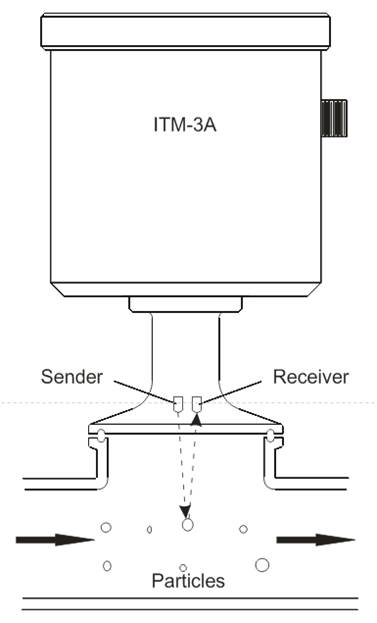
- An Infra-red LED emits light into media through the sapphire lens
- The receiver measures the amount of light reflected back by particles suspended in the media
- It generates a signal that is proportional to the amount of particles. This is the relative turbidity
Advantages of Turbidity Sensors
- Improved product quality
- Quicker product changeovers
- Product waste reduction
- Reduced in sewage and water usage costs
- Lower BOD fees
- Less chemical use
- Enhanced process availability and reduced water consumption from cleaning efficiency
- Improved process control
- A return on your minimal investment in months or weeks
Installation and Reliability Considerations
Which Turbidity Sensor is Best?
- Cost: Cost is always a consideration, and “more” isn’t always better. That 240mph Porsche might be fun, but it’s not going to get you back and forth to work any faster than your trusty Ford pickup. Always consider what you need along with the cost.
- Reliability and maintenance: What kind of glass does it use, and what’s the lifetime cost of maintenance? Does it contain an extension on the lens to keep it clean and free of build-up?
- Ease of installation and use: Does it contain one or multiple pieces that have to be installed? What control systems, electrical connections, and mechanical connections does it require? Does it contain an operator interface and an easy way to reprogram it for different ranges?
- Output types: Does it contain a secondary output, such as a relay output in case you’d like to do simple automation without requiring a computer?
- Designed for Dairy: Has the product been adapted from other uses, or is it designed for the rigorous demands of the dairy industry? The Anderson Instrument ITM-3 provides the fastest ROI, costs 40% less than comparable products, and is the only turbidity sensor designed with 80+ years of dairy experience for rigorous demands of the dairy industry. We guarantee no other product on the market in 2014 can outperform the ITM-3 in accurate detection of phase transition for product optimization, CIP optimization and BOD mitigation. The vast majority of Dairy process control integrators insist upon the Anderson Instrument ITM-3 turbidity sensor in their designs because nothing works better, is more reliable, and is more accurate while providing the best value.
An Example of How it’s Used
Find Out for Yourself
Key Advantages of the Anderson Instrument ITM-3
- Patented frontal sensor (EHEDG-compliant)
- Equipped with sapphire glass optics which are significantly more durable and abrasion –resistant than the competitor’s quartz glass approach
- No interference from reflections even when used with small nominal widths or electro-polished surfaces (i.e. nominal widths from DN25)
- Illuminated integral display
- Meets the CIP/SIP, etc. dairy industry process requirements

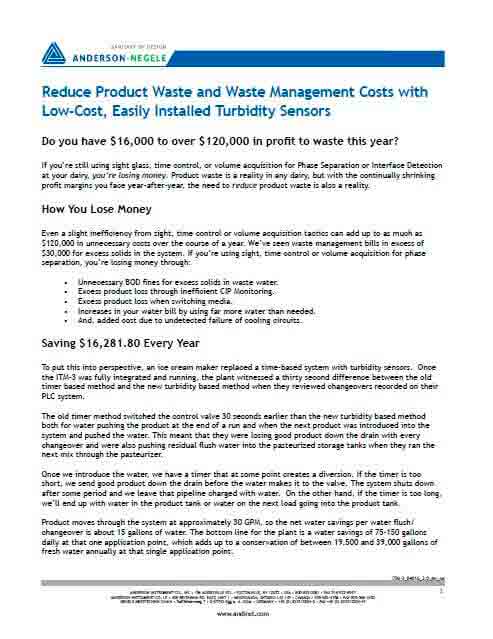
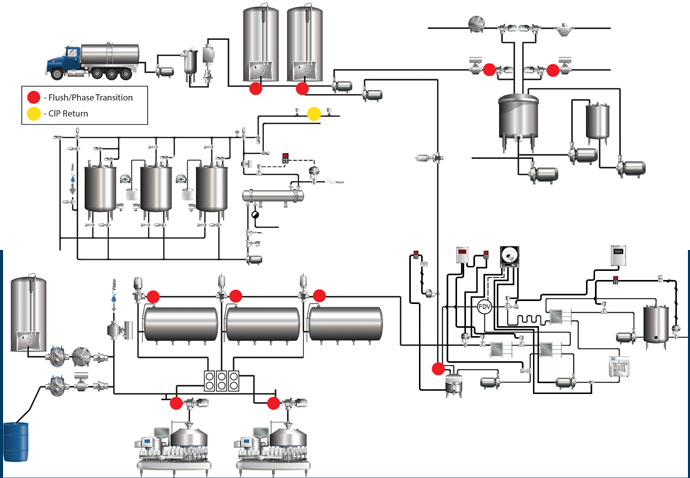
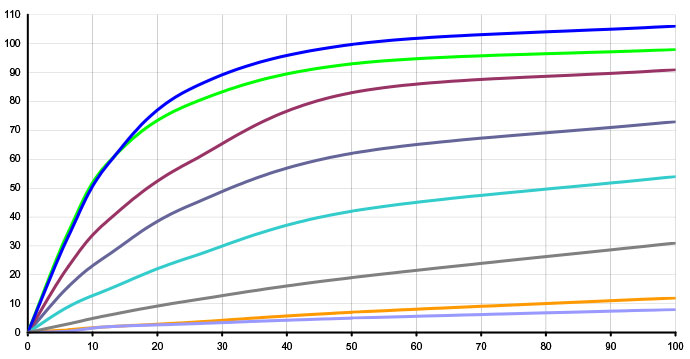
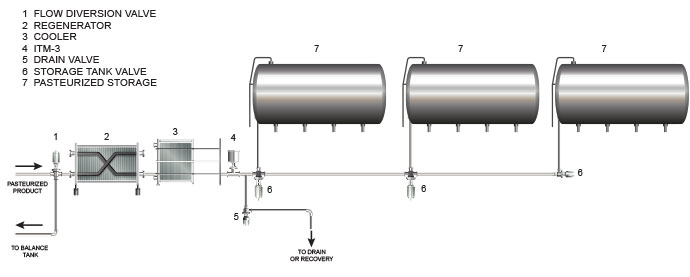
Copyright © 2022 Anderson-Negele